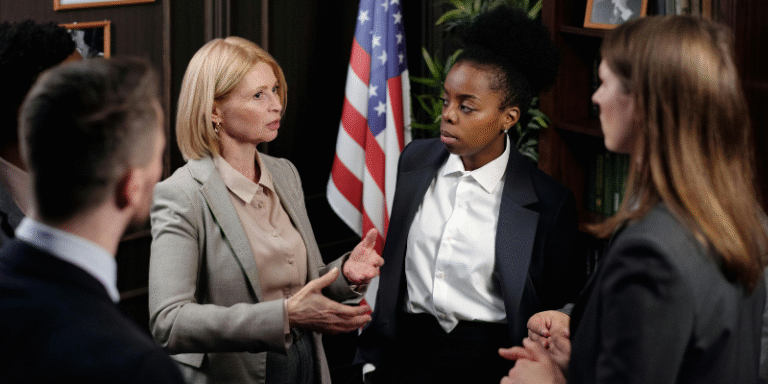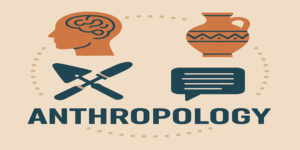Leadership is often misconstrued as a product of positional power or charismatic dominance. However, contemporary research increasingly recognises that effective leadership is not defined solely by titles or grand gestures but by consistent, small behaviours that cultivate trust, resilience, and collaboration. The infographic by Dr. Chris Mullen (2023) aptly encapsulates this ethos by outlining “10 Tiny Habits of Great Leaders.” These habits, while seemingly minor, align with extensive literature in leadership theory and organisational behaviour, and together form the bedrock of impactful leadership.
1.0 Expressing Gratitude Consistently
Saying “thank you” often—especially for everyday efforts—is a powerful yet underused tool in leadership. Research by Emmons and McCullough (2003) highlights that gratitude not only boosts individual well-being but also strengthens relationships and team cohesion. In organisational settings, regular expressions of appreciation have been shown to enhance employee engagement and motivation (Grant & Gino, 2010).
2.0 Listening with Full Attention
Active listening, a key element of emotional intelligence, requires the leader’s undivided attention, free from distractions like mobile devices. Goleman (2006) emphasises that attentive listening fosters empathy and psychological safety—core elements of effective leadership. Kline (1999) further argues that giving someone full attention is an act of profound respect, often inspiring greater creativity and trust.
3.0 Admitting Mistakes Without Defensiveness
Humble leadership has gained prominence in recent literature, particularly in the work of Owens and Hekman (2012), who describe humility as the acknowledgment of one’s limitations and mistakes. Leaders who admit when they’re wrong set a tone of honesty and continuous learning. This behaviour encourages a culture of accountability and reduces fear of failure within teams (Edmondson, 1999).
4.0 Asking Great Questions
Effective leaders recognise that they do not have all the answers. Instead, they cultivate curiosity by asking insightful questions. According to Marquardt (2011), questioning is central to problem-solving and innovation. The Socratic method—asking questions to stimulate critical thinking—is a time-tested approach to developing deeper understanding and collaborative dialogue in leadership.
5.0 Checking in Emotionally, Not Just on Tasks
Dr. Mullen’s notion of checking in with “How are you?” rather than “Did you finish it?” underscores the importance of emotional intelligence. As Goleman (1995) posits, leaders with high emotional intelligence are better equipped to manage stress, understand others, and navigate complex interpersonal dynamics. Regular emotional check-ins humanise leadership and strengthen team bonds (Barsade & O’Neill, 2014).
6.0 Staying Curious Longer
Curiosity fuels innovation and adaptability—key competencies for 21st-century leaders. According to Kashdan and Fincham (2004), curiosity enhances openness to new experiences, which can be critical in managing uncertainty and complex challenges. When leaders remain curious, especially in uncomfortable conversations, they model psychological flexibility and tolerance for ambiguity.
7.0 Celebrating Others Publicly, Coaching Privately
Public recognition enhances morale and reinforces positive behaviour (Nelson, 2003). However, effective leaders also understand the importance of addressing performance issues privately to preserve dignity and trust. This dual approach resonates with Blanchard and Johnson’s (1982) “One Minute Manager” philosophy—praising in public and correcting in private for optimal impact.
8.0 Following Through on Small Promises
Consistency in actions builds credibility. Leaders who fulfil even minor commitments demonstrate reliability and integrity, reinforcing trust among team members. According to Kouzes and Posner (2012), credibility is the foundation of leadership, and actions must align with words. Small follow-throughs signal respect and professionalism.
9.0 Protecting the Energy of the Team
In today’s high-demand work environments, emotional and psychological energy is a scarce resource. Leaders who act as buffers—shielding their teams from unnecessary stress or toxic influences—promote sustainable performance. Research by Boyatzis and McKee (2005) on “resonant leadership” shows that leaders who nurture positivity and shield teams from burnout create more resilient organisations.
10.0 Modelling Resilience During Difficult Times
Perhaps the most profound habit in Dr. Mullen’s list is modelling resilience—not through hollow optimism, but through calm, steady presence. Leadership resilience is closely linked to adaptive capacity (Luthans, 2002) and is critical during crises. By demonstrating composure and perspective, leaders help teams navigate uncertainty with confidence.
Theoretical Integration and Implications
The habits presented by Dr. Mullen align closely with transformational and servant leadership theories. Transformational leaders, as defined by Bass and Avolio (1994), inspire and motivate followers through individual consideration and idealised influence—both of which are evident in behaviours like emotional check-ins, curiosity, and follow-through. Servant leadership, championed by Greenleaf (1977), further emphasises the leader’s role in serving others, fostering community, and enabling growth—reflected in habits such as celebrating others, asking questions, and listening attentively.
Moreover, these habits are consistent with Schein’s (2010) concept of organisational culture formation through daily interactions. When leaders model these behaviours, they embed values of trust, empathy, and resilience into the culture, creating environments where people feel safe, valued, and empowered.
Leadership is less about commanding authority and more about consistent, deliberate behaviour that builds trust, connection, and resilience. As Dr. Mullen (2023) illustrates, tiny habits—when practised with intention—have an outsized impact on team dynamics and organisational health. Grounded in emotional intelligence, humility, and attentiveness, these habits form the building blocks of enduring leadership.
In a world often fixated on charisma and outcomes, it is these daily, sometimes invisible habits that define truly great leaders. Whether in boardrooms or classrooms, it is the quiet consistency of these actions that fosters trust, nurtures engagement, and drives sustainable success.
Would you like me to also create a visual summary infographic highlighting the 10 habits as a quick reference tool for training or presentations?
References
Barsade, S.G. & O’Neill, O.A. (2014) ‘What’s love got to do with it? A longitudinal study of the culture of companionate love and employee and client outcomes in a long-term care setting’, Administrative Science Quarterly, 59(4), pp. 551–598.
Bass, B.M. & Avolio, B.J. (1994) Improving Organisational Effectiveness through Transformational Leadership. Thousand Oaks: Sage Publications.
Blanchard, K. & Johnson, S. (1982) The One Minute Manager. New York: William Morrow.
Boyatzis, R. & McKee, A. (2005) Resonant Leadership: Renewing Yourself and Connecting with Others Through Mindfulness, Hope and Compassion. Boston: Harvard Business School Press.
Edmondson, A. (1999) ‘Psychological Safety and Learning Behaviour in Work Teams’, Administrative Science Quarterly, 44(2), pp. 350–383.
Emmons, R.A. & McCullough, M.E. (2003) ‘Counting blessings versus burdens: An experimental investigation of gratitude and subjective well-being in daily life’, Journal of Personality and Social Psychology, 84(2), pp. 377–389.
Goleman, D. (1995) Emotional Intelligence: Why It Can Matter More Than IQ. New York: Bantam.
Goleman, D. (2006) Social Intelligence: The New Science of Human Relationships. New York: Bantam.
Grant, A.M. & Gino, F. (2010) ‘A little thanks goes a long way: Explaining why gratitude expressions motivate prosocial behaviour’, Journal of Personality and Social Psychology, 98(6), pp. 946–955.
Greenleaf, R.K. (1977) Servant Leadership: A Journey into the Nature of Legitimate Power and Greatness. Mahwah: Paulist Press.
Kashdan, T.B. & Fincham, F.D. (2004) ‘Facilitating curiosity: A social and self-regulatory perspective for scientifically based interventions’, Positive Psychology in Practice, pp. 482–503.
Kline, N. (1999) Time to Think: Listening to Ignite the Human Mind. London: Cassell Illustrated.
Kouzes, J.M. & Posner, B.Z. (2012) The Leadership Challenge: How to Make Extraordinary Things Happen in Organizations. 5th edn. San Francisco: Jossey-Bass.
Luthans, F. (2002) ‘The need for and meaning of positive organisational behaviour’, Journal of Organisational Behavior, 23(6), pp. 695–706.
Marquardt, M.J. (2011) Leading with Questions: How Leaders Find the Right Solutions by Knowing What to Ask. San Francisco: Jossey-Bass.
Mullen, C. (2023) ‘10 Tiny Habits That Make Great Leaders Stand Out’. [Online] Available at: https://www.chrismullen.org/ [Accessed 3 July 2025].
Owens, B.P. & Hekman, D.R. (2012) ‘Modeling how to grow: An inductive examination of humble leader behaviours, contingencies, and outcomes’, Academy of Management Journal, 55(4), pp. 787–818.
Schein, E.H. (2010) Organisational Culture and Leadership. 4th edn. San Francisco: Jossey-Bass.









